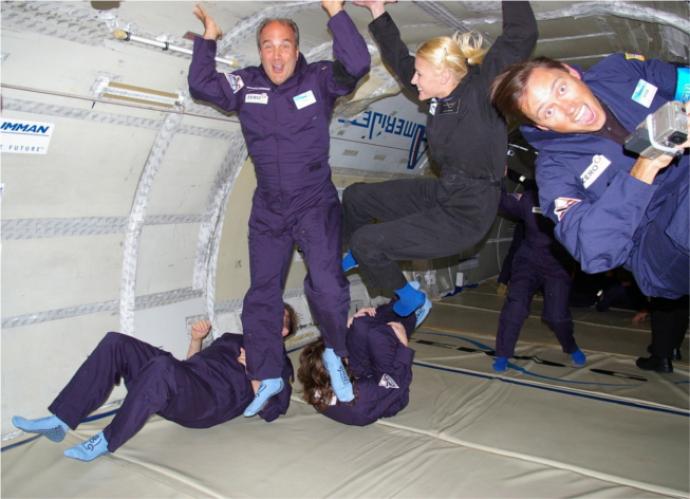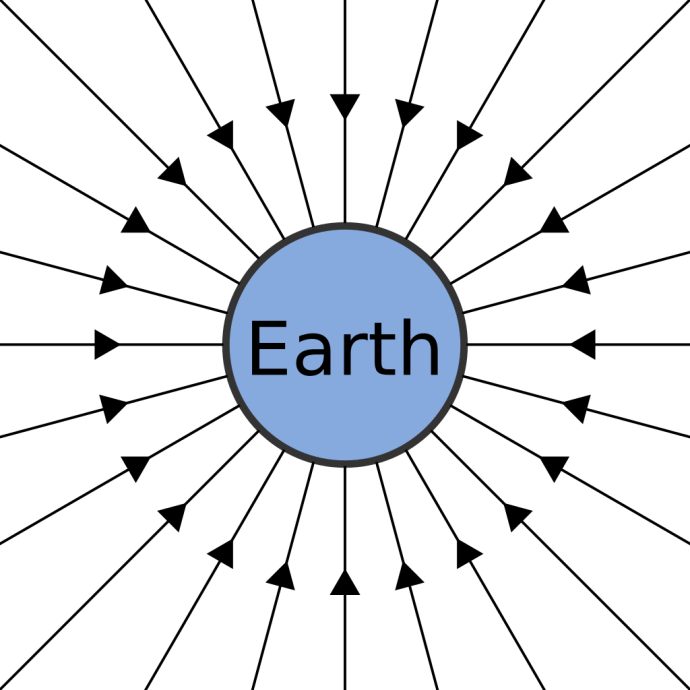Gravity is the name of the force that pulls objects together. It is a non-contact force. This means it acts on objects that are not touching each other.
Gravity exists everywhere. On Earth we feel it as a pull towards the centre of the Earth. Gravity also keeps the Moon in orbit around the Earth, and the planets in orbit around the Sun.
Everything made of mass has gravity. Even you and me! However, we only really notice the pull of gravity if one of the objects is massive, like a planet!
The more mass an object has, the more gravity it has. The Earth has enough gravity to pull you to the ground.
Gravity extends out past the surface of an object. So gravity reaches into space. This means the Moon can have a gravitational effect on the Earth. We see this effect in the rise and fall of the tides.
Gravity also gets stronger the closer you get to the object producing it. This is why the planets closer to the Sun, where the Sun's gravity is stronger, move faster than those further away.


- Gravitational Field Strength
All objects with mass have a gravitational field. We measure the gravitational field strength (g) in N/kg. The more mass an object has, the greater its gravitational field strength will be.
On Earth, g = 9.8 N/kg.
- Weight
Weight is the force acting on an object due to gravity. It is measured in Newtons (N). You can calculate weight using this equation.
Weight = Mass x Gravitational Field Strength
If you landed on another world where the gravitational field is weaker than on the Earth, you would weigh less. If you land somewhere the gravitational field is stronger than on the Earth, you weigh more. But remember, your mass would not change!
- Surface Gravity
Surface gravity (g) is the gravitational force you experience on the surface of an object. The surface gravity depends on both the mass of the object, and its size, or radius. We measure surface gravity as an acceleration and use the units m/s2. For ease, we often think about the surface gravity of another planet in comparison to the Earth. So the Earth has a surface gravity of 1 g. A planet where the surface gravity is two times as strong as the Earth has a surface gravitational of 2 g. The surface gravity is different on each planet in our Solar System.
On the Moon, the surface gravity is less than 1 g. So an object on the Moon accelerates at a slower rate due to gravity than it does on Earth. This is why if we drop a ball on the Moon it falls more slowly than it does on the Earth.
Video fileA ball falling on the Moon. (This work by The Schools' Observatory is licensed under All rights reserved) - The Gravitational Constant
Isaac Newton's law of gravitation explains how gravity works everywhere in the Universe. In it, Newton explains that the force of gravity on an object depends on the masses of the objects involved. It also depends on the distance between the objects, and a Gravitational Constant.
Newton worked out the Gravitational Constant (G) as 6.67 x 10-11 N kg-2 m2.
We can use Newton's law of gravitation to work out the value of a gravitational force between two objects, where F = G (m1m2) / r2.
In this equation, F is the Force and G is the Gravitational Constant. The distance between the two objects is r, and m1 and m2 are the masses of the objects.
We can also use Newton's law of gravitation to work out gravitational field strength using g = F/m = Gm/r2.
